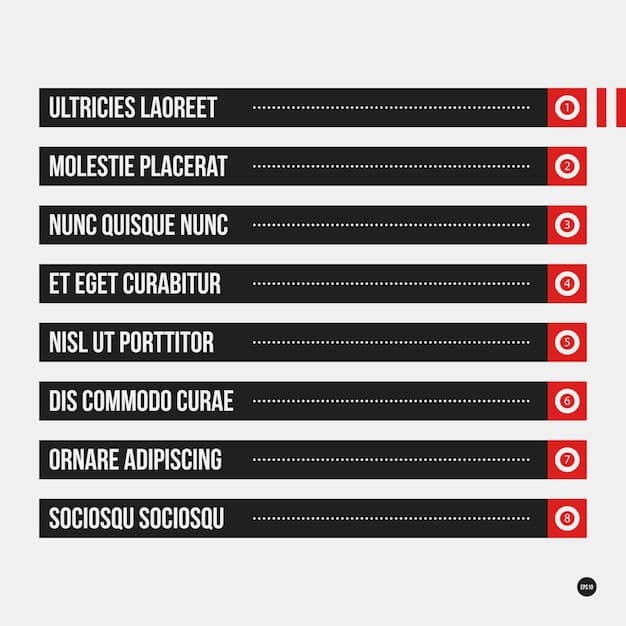Maximize Your Streaming Experience: Accessibility Features Explained

Streaming service accessibility features, such as closed captions and audio descriptions, ensure content is available and enjoyable for everyone, including individuals with disabilities, improving user experience and promoting inclusivity.
Streaming services have revolutionized how we consume media, offering a vast library of content at our fingertips. However, to truly make entertainment accessible to all, streaming service accessibility features like closed captions, audio descriptions, and other tools are essential. These features not only enhance the viewing experience for individuals with disabilities but also benefit a broader audience.
Understanding Streaming Service Accessibility
Accessibility in streaming services refers to the design and implementation of features that enable people with disabilities to access and enjoy digital content. These features aim to remove barriers, ensuring that everyone can fully participate in the streaming experience. Understanding these options is crucial for both users and content providers.
Why Accessibility Matters
Accessibility is more than just a legal requirement; it is a fundamental aspect of inclusivity. It ensures that people with visual, auditory, cognitive, or motor impairments can enjoy the same content as everyone else. By incorporating accessibility features, streaming services broaden their audience and foster a more inclusive entertainment environment.
Common Accessibility Barriers
Many individuals face barriers when using streaming services. These may include:
- Visual impairments: Difficulty seeing on-screen content.
- Auditory impairments: Difficulty hearing dialogue or sound effects.
- Cognitive impairments: Difficulty understanding complex narratives or interfaces.
- Motor impairments: Difficulty navigating menus or using remote controls.
Addressing these barriers through thoughtful design and implementation of accessibility features is key to creating a truly inclusive streaming experience.
In summary, embracing accessibility in streaming services is crucial for creating a more inclusive and user-friendly entertainment landscape for all.

Closed Captions: Making Dialogue Visible
Closed captions are a crucial accessibility feature that displays the dialogue and other relevant audio information as text on the screen. They benefit not only those who are deaf or hard of hearing but also individuals learning a new language, watching content in noisy environments, or simply preferring to read along with the dialogue.
Benefits of Closed Captions
The advantages of closed captions extend beyond accessibility:
- Improved comprehension: Helps viewers understand dialogue, especially with accents or fast speech.
- Language learning: Assists in learning new languages by providing written text to accompany spoken words.
- Enhanced viewing experience: Allows viewers to follow content in noisy environments or when audio quality is poor.
Customizing Closed Captions
Many streaming services offer customization options for closed captions, allowing users to adjust:
- Font size: Increase or decrease the size of the text for better readability.
- Font color: Change the color of the text to improve contrast against the background.
- Background color: Adjust the background color behind the text to reduce glare or improve visibility.
- Text positioning: Move the captions to different parts of the screen for optimal viewing.
Therefore, closed captions offer considerable benefits that improve the viewing experience for a diverse audience.
Audio Descriptions: Narrating Visual Elements
Audio descriptions provide narration of visual elements in a video, such as actions, facial expressions, and scene changes, during pauses in dialogue. This feature is essential for people who are blind or have low vision, enabling them to understand the visual context of a scene without relying solely on what is being said.
How Audio Descriptions Work
Audio descriptions are typically added as a separate audio track that can be toggled on or off. The narrator describes key visual elements, providing context and enhancing the overall understanding of the content. These descriptions fill in the gaps, ensuring that the viewer does not miss important details.
The Importance of Quality Audio Descriptions
High-quality audio descriptions are:
- Descriptive: Providing clear and detailed accounts of visual elements.
- Concise: Fitting descriptions into natural pauses in dialogue.
- Objective: Avoiding personal opinions or interpretations.
- Consistent: Maintaining a consistent tone and style throughout the content.
Finding Content with Audio Descriptions
Many streaming services label content with audio descriptions, making it easier for users to find. Look for accessibility icons or filters that indicate the availability of this feature. Additionally, some platforms allow users to set audio description as a default preference.
In conclusion, audio descriptions are a vital tool for making visual content accessible to individuals with visual impairments, enhancing their overall streaming experience.

Subtitle and Font Customization Options
Beyond closed captions, streaming services often provide a range of subtitle customization options. These options allow viewers to tailor the appearance of subtitles to their preferences, improving readability and reducing eye strain. Font customization is another crucial aspect of accessibility, allowing users to adjust text size, style, and color.
Adjusting Subtitle Appearance
Subtitle customization options typically include:
- Font size: Adjusting the size of the text to improve readability, especially on smaller screens.
- Font style: Choosing different font styles, such as sans-serif or serif, to suit individual preferences.
- Font color: Selecting a font color that provides optimal contrast against the background.
- Background color and opacity: Adjusting the background behind the subtitles to reduce glare or improve visibility.
Font Customization for Overall Readability
Customizing the font is essential for viewers with visual impairments or those who simply prefer a different text style. Adjustments can include:
- Font size: Increasing the size of the text throughout the streaming service interface.
- Font style: Choosing a font that is easy to read and visually appealing.
- Font spacing: Adjusting the spacing between letters and lines to improve readability.
Importance of User Preferences
Allowing users to customize subtitles and fonts enables them to create a viewing experience that is comfortable and accessible. These adjustments can significantly reduce eye strain and improve comprehension, making streaming more enjoyable for everyone.
Therefore, subtitle and font customization options are an important part of making streaming services more accessible and user-friendly.
Keyboard Navigation and Voice Control
For individuals with motor impairments, keyboard navigation and voice control are essential accessibility features. These tools allow users to interact with streaming services without relying on a mouse or remote control. Keyboard navigation enables users to navigate menus and control playback using keyboard keys, while voice control allows them to perform actions using spoken commands.
How Keyboard Navigation Works
Keyboard navigation typically includes:
- Tab key: Moving focus between different elements on the screen.
- Arrow keys: Navigating menus and lists.
- Enter key: Selecting an item or activating a button.
- Spacebar: Pausing or playing content.
Voice Control for Hands-Free Operation
Voice control allows users to:
- Start or stop playback: Using commands like “Play” or “Pause.”
- Navigate menus: Saying commands like “Go to Home” or “Open Settings.”
- Search for content: Speaking the title of a movie or TV show.
Benefits for Users with Motor Impairments
By providing alternative input methods, keyboard navigation and voice control make streaming services accessible to individuals who have difficulty using traditional input devices. These features enhance their independence and allow them to enjoy content more easily.
In summary, keyboard navigation and voice control are crucial tools for making streaming services accessible to individuals with motor impairments, promoting independence and enhancing their overall experience.
Screen Reader Compatibility
Screen readers are software programs that convert text and other visual elements on a screen into speech or braille. Screen reader compatibility is essential for individuals who are blind or have low vision, enabling them to access streaming services by listening to the content on the screen.
How Screen Readers Work
Screen readers use text-to-speech technology to read aloud text, buttons, menus, and other elements on the screen. They also provide information about the structure and layout of a web page or application, allowing users to navigate effectively.
Ensuring Compatibility
To ensure screen reader compatibility, streaming services should:
- Use semantic HTML: Structuring content in a way that is easy for screen readers to interpret.
- Provide alternative text for images: Adding descriptive text to images so that screen readers can convey their content.
- Ensure keyboard accessibility: Allowing users to navigate and interact with all elements using the keyboard.
Benefits of Screen Reader Compatibility
Screen reader compatibility enables individuals who are blind or have low vision to access streaming services independently. They can browse content, select movies and TV shows, and control playback using their screen reader, just like sighted users.
Therefore, screen reader compatibility is a crucial aspect of making streaming services accessible to individuals with visual impairments, promoting inclusivity and enhancing their overall experience.
Future Trends in Streaming Accessibility
The field of streaming accessibility is continuously evolving, with new technologies and features emerging to enhance the viewing experience for individuals with disabilities. Staying informed about these trends is essential for both users and content providers.
Artificial Intelligence (AI) and Accessibility
AI is playing an increasingly important role in accessibility, with applications such as:
- Automatic audio description generation: Using AI to create audio descriptions for videos, reducing the manual effort required.
- Real-time captioning: Providing accurate captions for live events, such as news broadcasts and sports games.
- Personalized recommendations: Suggesting content based on user preferences and accessibility needs.
Extended Reality (XR) Accessibility
As XR technologies like virtual reality (VR) and augmented reality (AR) become more popular, accessibility is crucial. Features may include:
- Customizable interfaces: Allowing users to adjust the size, color, and layout of virtual environments.
- Spatial audio: Providing directional sound cues to help users navigate virtual spaces.
- Haptic feedback: Using vibrations to convey information to users with visual impairments.
The Importance of User Feedback
User feedback is essential for driving innovation in streaming accessibility. Streaming services should actively solicit feedback from users with disabilities and use it to improve their platforms. By working together, we can create a more inclusive entertainment environment for everyone.
In conclusion, the future of streaming accessibility is promising, with new technologies and features continuously emerging to enhance the viewing experience for individuals with disabilities. By embracing these trends and prioritizing user feedback, we can create a more inclusive entertainment landscape for all.
| Key Feature | Brief Description |
|---|---|
| 💬 Closed Captions | Textual representation of dialogues and sounds for the hearing impaired. |
| 🎧 Audio Descriptions | Narrations describing important visual details for the visually impaired. |
| ⌨️ Keyboard Navigation | Control streaming services using keyboard keys for users with motor impairments. |
| 👓 Font Customization | Adjust font size and style for better readability of subtitles and interfaces. |
Frequently Asked Questions
▼
These are tools and options like closed captions, audio descriptions, and keyboard navigation, designed to make streaming content accessible to individuals with various disabilities, enhancing their viewing experience.
▼
Typically, you can enable closed captions in the settings menu of the streaming service or device. Look for options labeled “Subtitles,” “CC,” or “Accessibility” to turn them on and customize their appearance.
▼
No, not all streaming content includes audio descriptions. Availability varies by service and content provider. Look for accessibility icons or filters to find content with audio descriptions.
▼
Yes, many streaming services offer customization options for subtitles, allowing you to adjust the font size, color, background, and positioning to improve readability and reduce eye strain.
▼
Consider contacting the streaming service to request the implementation of accessibility features. You can also explore alternative services that prioritize accessibility to ensure an inclusive viewing experience.
Conclusion
In conclusion, streaming service accessibility features are essential for ensuring that digital content is available and enjoyable for everyone, regardless of their abilities. By understanding and utilizing these features, both users and content providers can contribute to a more inclusive and accessible entertainment landscape.





